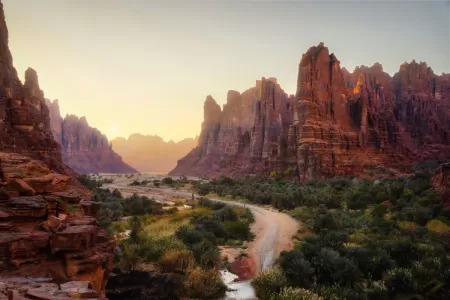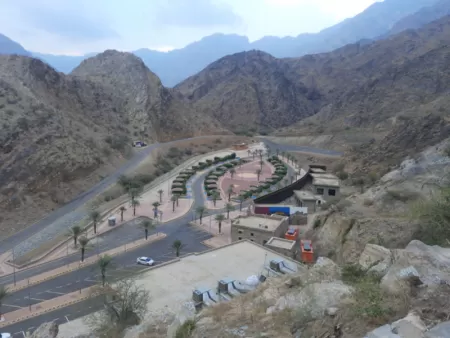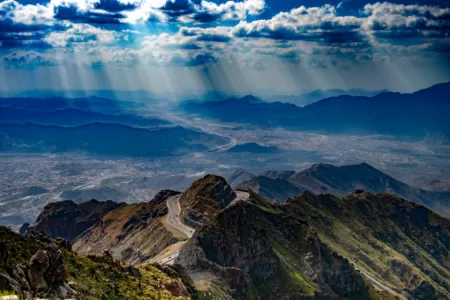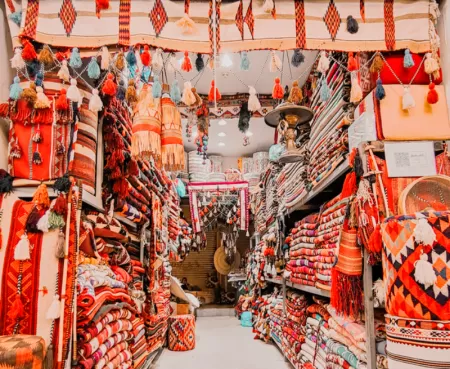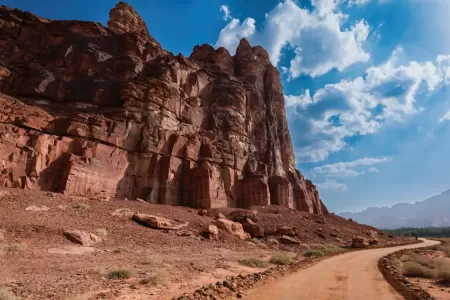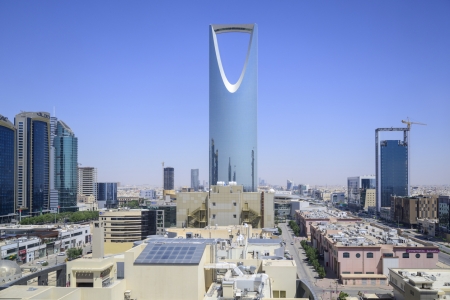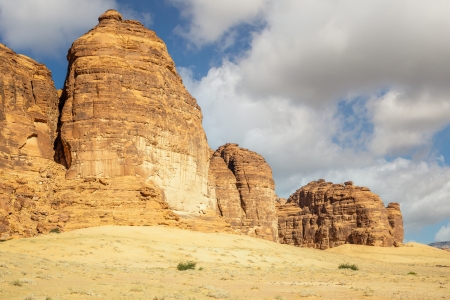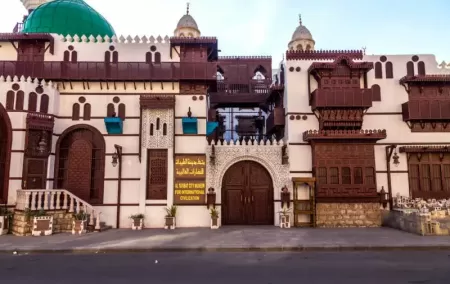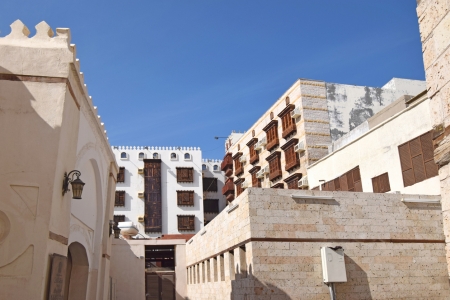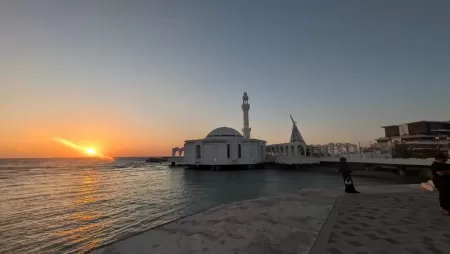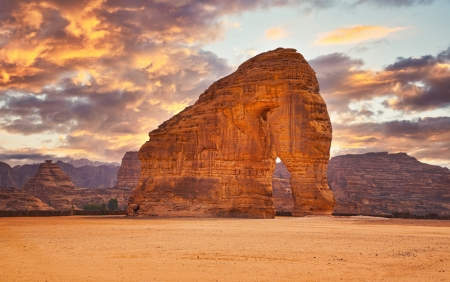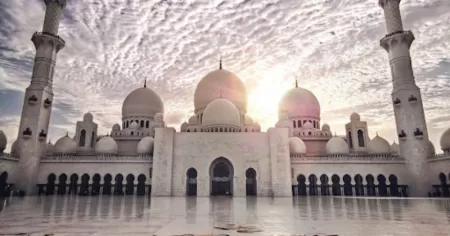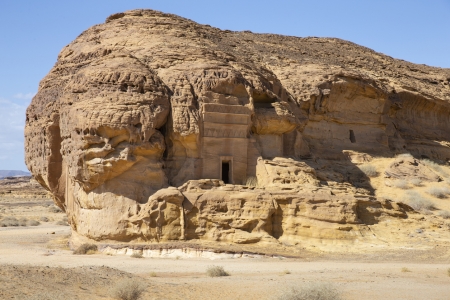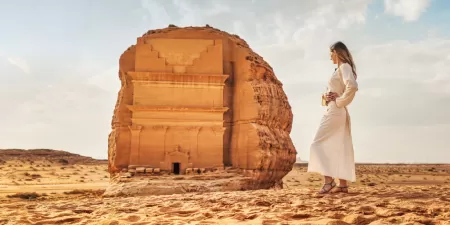Mysteries Harrat Uwayrid
Harrat Uwayrid is a volcanic lava field located in the northwestern region of Saudi Arabia, known for its rugged black basalt terrain, ancient geological formations, and rich biodiversity within the surrounding desert environment.
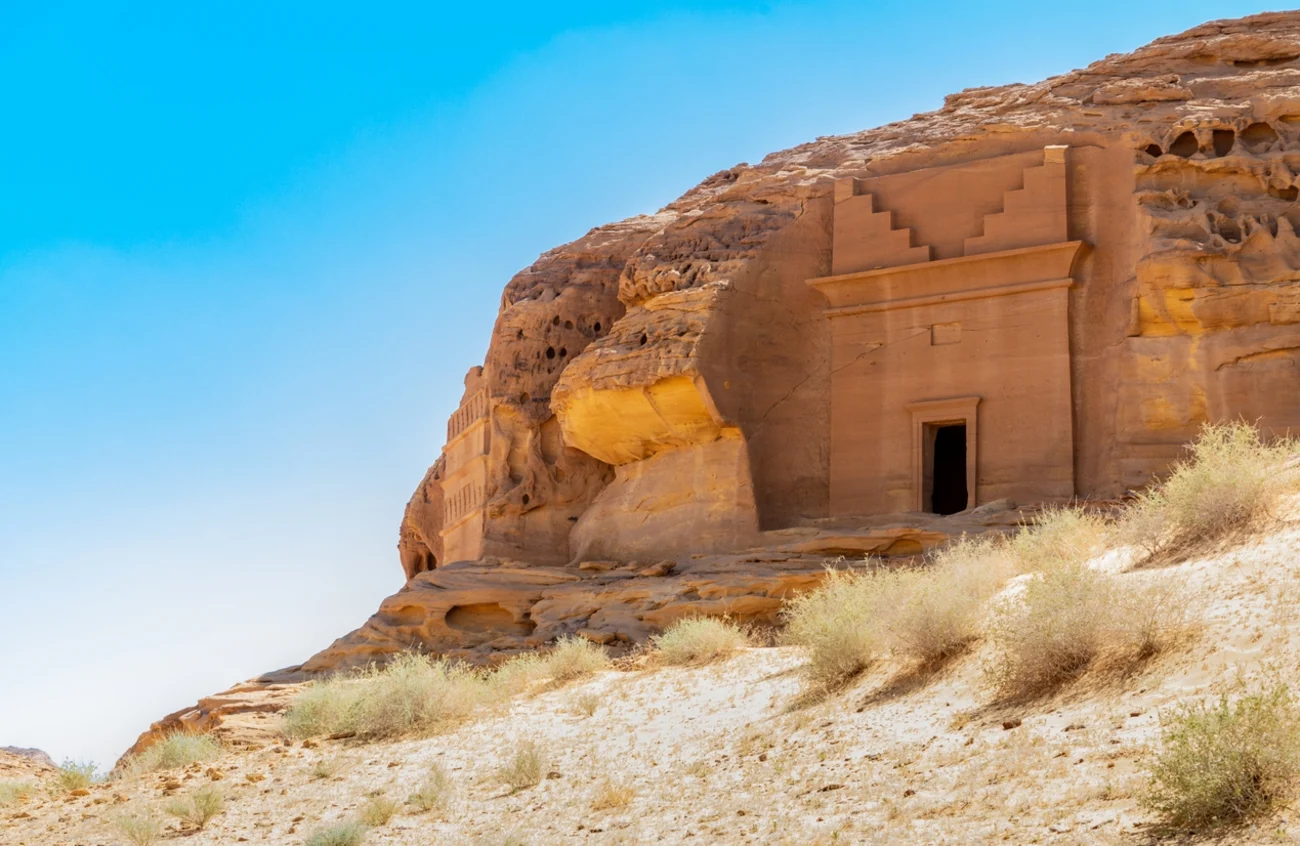
Geological Overview:
Formation and Composition:
Harrat 'Uwayrid is part of a series of volcanic fields that line the western Arabian Peninsula, specifically situated about 120 kilometers east of the Red Sea. This volcanic field encompasses a vast area of approximately 240 kilometers in length, characterized by a variety of volcanic landforms including scoria cones, tuff cones, and extensive lava flows. The primary rock type found here is olivine basalt, which is known for its dark color and high iron content, contributing to the field's rugged terrain.
The geological processes that formed Harrat 'Uwayrid date back to the Quaternary period, during which significant volcanic activity shaped the landscape. The region is marked by numerous lava flows that have solidified over thousands of years, creating a diverse topography that is both fascinating and complex. The volcanic field is divided from its northern neighbor, Harrat ar Rahah, by an erosional divide, a feature that further highlights the dynamic geological history of the area.
Volcanic Activity:
While Harrat 'Uwayrid is currently classified as dormant, its history reveals a more tumultuous past. The most notable eruption is believed to have occurred around 640 AD, originating from either the Hala-'l-Bedr or Hala-'l-'Ischia cones. This eruption is steeped in local lore, with Bedouin legends recounting tales of fire and stones raining down upon the land, resulting in the tragic loss of livestock and lives. Such narratives enrich the cultural significance of the volcano, intertwining natural history with human experience.
The eruption style of Harrat 'Uwayrid is primarily effusive, characterized by the outpouring of lava rather than explosive activity. This type of eruption leads to the formation of extensive lava fields, which are prevalent in the southern segments of the volcanic field. The lava flows in this region are particularly interesting as they rise above the Cambrian sandstone plain, creating a stark contrast between the dark basalt and the lighter sandstone.
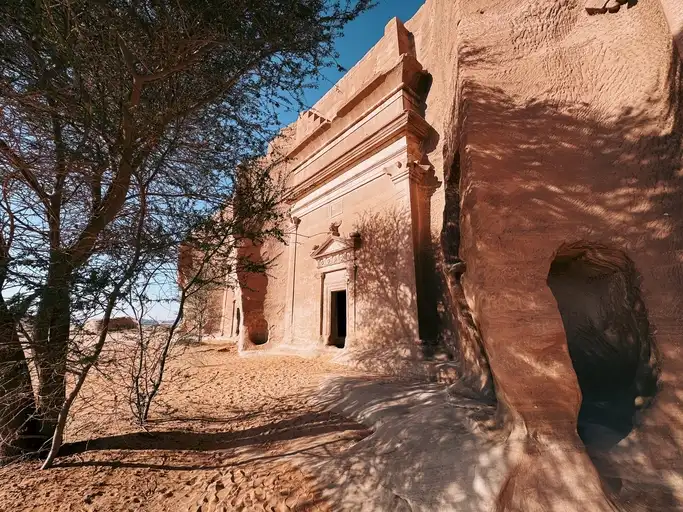
Cultural Significance:
Bedouin Legends and Historical Context:
The cultural tapestry of Harrat 'Uwayrid is woven with the stories of the Bedouin tribes that inhabit the surrounding areas. The legends associated with the volcanic eruptions serve as a reminder of the powerful forces of nature and their impact on human lives. The narrative of the 640 AD eruption, for example, is not just a geological event but a pivotal moment in the collective memory of the local population.
These stories often highlight themes of survival and resilience, as the Bedouins adapted to the challenges posed by the volcanic landscape. The volcanic fields provided both a source of danger and a rich environment for grazing livestock, which shaped the lifestyle and culture of the tribes. The duality of the landscape mirrors the complexities of life in the region, where beauty and peril coexist.
Archaeological Discoveries:
In addition to its geological and cultural significance, Harrat 'Uwayrid has also been the site of various archaeological discoveries. As researchers delve into the layers of history embedded in the volcanic rock, they uncover remnants of ancient civilizations that once thrived in the region. These findings contribute to our understanding of human settlement patterns and the relationship between people and their environment.
The archaeological evidence suggests that the area has been inhabited for millennia, with ancient trade routes likely passing through the volcanic fields. The strategic location of Harrat 'Uwayrid, combined with its natural resources, made it an attractive site for early human settlements. The interplay between the volcanic landscape and human activity continues to be a focus of study for historians and archaeologists alike.
Ecological Aspects:
Flora and Fauna:
The unique volcanic terrain of Harrat 'Uwayrid supports a diverse array of plant and animal life. The harsh conditions, characterized by rocky soil and limited water availability, have led to the evolution of specialized species that are well-adapted to the environment. Vegetation in the area primarily consists of hardy shrubs and grasses, which provide sustenance for local wildlife.
Bird species are particularly abundant in the region, with many migratory birds using the volcanic fields as a stopover during their journeys. The diverse habitats created by the varying elevations and geological features offer nesting sites and food sources for these avian travelers. Additionally, small mammals and reptiles can be found in the area, contributing to the ecological diversity of Harrat 'Uwayrid.
Conservation Efforts:
As interest in Harrat 'Uwayrid grows, so does the need for conservation efforts to protect its unique ecosystems. The delicate balance between human activity and environmental preservation is critical to maintaining the integrity of the volcanic landscape. Local authorities and conservation organizations are increasingly recognizing the importance of sustainable tourism practices that minimize the impact on the environment.
Efforts to educate visitors about the ecological significance of the area are also underway. By fostering a sense of responsibility and stewardship among tourists, stakeholders aim to ensure that Harrat 'Uwayrid remains a site of natural beauty and cultural heritage for future generations.
Tourism Potential:
Attractions and Activities:
Harrat 'Uwayrid is not only a geological marvel but also a burgeoning tourist destination. Its dramatic landscapes and rich history attract visitors from around the globe. Tourists can explore the volcanic field through guided tours, hiking trails, and educational programs that highlight the geological and cultural significance of the area.
One of the most popular activities is hiking to the summit of the Hala-'l-Bedr cone, where visitors are rewarded with breathtaking panoramic views of the surrounding landscape. The experience of standing atop a dormant volcano, gazing out over the vast lava fields and rugged terrain, is both exhilarating and humbling.
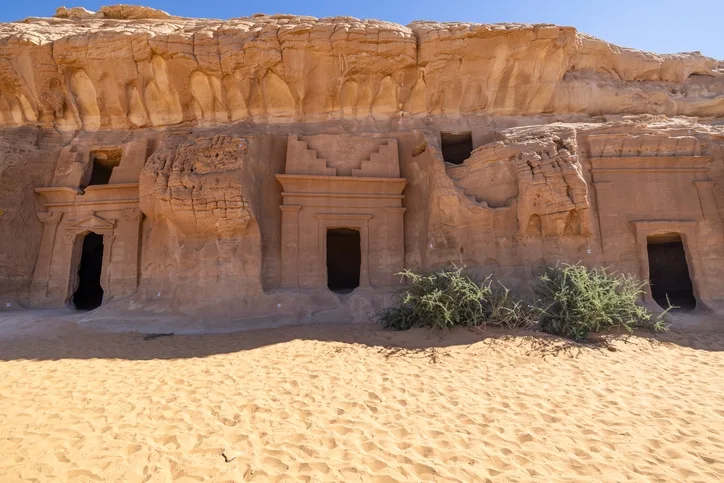
Visitor Facilities:
To accommodate the growing number of tourists, infrastructure development in the area has been steadily improving. Facilities such as visitor centers, rest areas, and guided tour services are being established to enhance the overall experience. These amenities not only provide comfort but also serve as educational hubs where visitors can learn more about the geology and history of Harrat 'Uwayrid.
Local cuisine and cultural experiences are also being integrated into the tourism offerings. Visitors can enjoy traditional Bedouin meals, participate in cultural workshops, and engage with local artisans, providing a well-rounded experience that connects them to the heritage of the region.
Scientific Research:
Ongoing Studies:
Harrat 'Uwayrid has become a focal point for scientific research, particularly in the fields of geology and volcanology. Researchers are investigating the volcanic processes that shaped the landscape, as well as the potential for future eruptions. Studies of the lava flows, gas emissions, and seismic activity contribute to our understanding of volcanic behavior and hazards.
Collaborations between local universities and international research institutions are fostering a deeper exploration of the region's geology. These partnerships not only advance scientific knowledge but also promote educational opportunities for students and researchers alike.
Data Collection and Monitoring:
Monitoring the volcanic activity in Harrat 'Uwayrid is essential for understanding potential hazards and ensuring public safety. Advanced technologies, such as remote sensing and seismic monitoring, are being employed to collect data on ground deformation, gas emissions, and other indicators of volcanic activity. This information is crucial for developing early warning systems and enhancing preparedness for any future eruptions.
The integration of technology in monitoring efforts also allows for real-time data analysis, which can be shared with the public and relevant authorities. By keeping communities informed about volcanic activity, researchers aim to mitigate risks and promote safety in the region.
Future Prospects:
Sustainable Development:
As Harrat 'Uwayrid continues to gain recognition as a tourist destination, the focus on sustainable development becomes increasingly important. Striking a balance between economic growth and environmental conservation is essential for the long-term health of the region. Stakeholders are exploring strategies that promote responsible tourism while preserving the natural and cultural heritage of Harrat 'Uwayrid.
Investment in eco-friendly infrastructure, educational programs, and community engagement initiatives are all part of the vision for the future. By prioritizing sustainability, Harrat 'Uwayrid can become a model for other volcanic regions around the world.
Community Involvement:
Engaging local communities in tourism development is vital for ensuring that the benefits of increased visitation are shared equitably. Initiatives that empower local residents to participate in tourism-related activities can foster economic opportunities while preserving cultural traditions. By involving the Bedouin tribes in the decision-making process, stakeholders can create a more inclusive and sustainable tourism model.
Community-led projects, such as cultural festivals and artisan markets, can showcase the rich heritage of the region while providing visitors with authentic experiences. This approach not only enhances the visitor experience but also strengthens community ties and promotes cultural pride.
Conclusion:
Harrat 'Uwayrid stands as a testament to the power of nature and the resilience of human culture. Its geological wonders, rich history, and vibrant ecosystems make it a captivating destination for exploration and discovery. As we continue to learn from this remarkable volcanic field, it is essential to foster a sense of stewardship that ensures its preservation for generations to come. Through sustainable practices, community involvement, and ongoing research, Harrat 'Uwayrid can thrive as a symbol of both natural beauty and cultural heritage in the heart of Saudi Arabia.
FAQS:
1. Where is Harrat Uwayrid located?
Harrat Uwayrid is situated in the AlUla region of northwestern Saudi Arabia.
2. What is the best time to visit Harrat Uwayrid?
The cooler months between October and April are ideal for visiting, offering comfortable temperatures for exploration.
3. Are there any accommodation options near Harrat Uwayrid?
Yes, the nearby town of AlUla offers various accommodation options, ranging from luxury resorts to budget-friendly hotels.
4. Is it necessary to obtain permits to visit Harrat Uwayrid?
Visitors should check with local authorities or tour operators regarding any required permits or regulations before planning their visit.
5. What activities can visitors engage in at Harrat Uwayrid?
Activities include hiking, bird watching, photography, and exploring archaeological sites.
Don’t miss this wonder on your Saudi Arabia Tours - Book your Journey Now!

Customize Your Dream Vacation!
Get in touch with our local experts for an unforgettable journey.
Plan Your Trip



